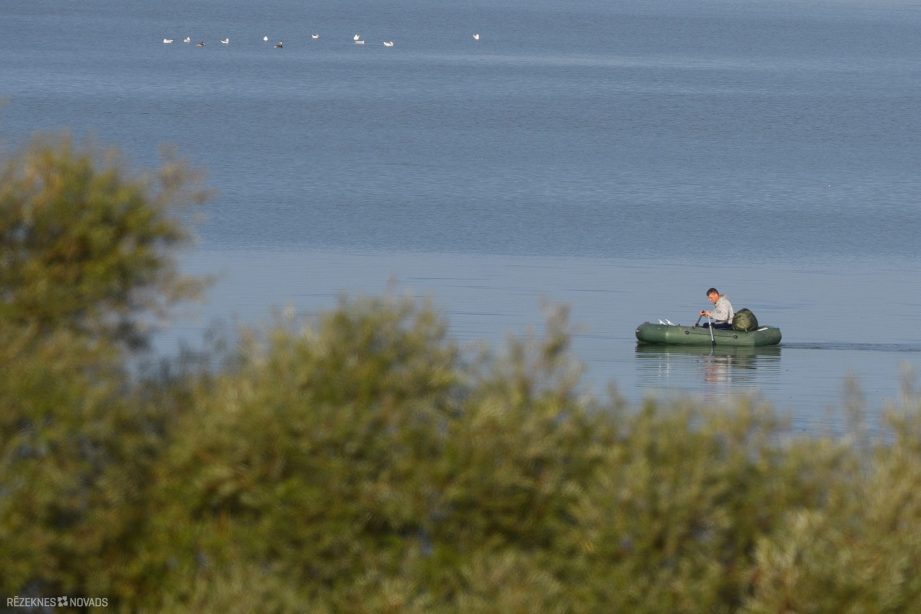Zero pollution: a large proportion of European bathing waters meet the highest quality standards

Annual published annual Report on bathing waters it is shown that in 2021 almost 85 % European bathing sites met the highest standards of European Union water quality, namely the quality of their water. The assessment gives a good idea of where the best quality bathing sites in Europe are available for the swivellers. This assessment, prepared by the European Environment Agency (EVA) in cooperation with the European Commission, is based on 21 859 bathing sites across Europe. The evaluation covers the results of the 2021 monitoring IN THE EU Member States, Albania and Switzerland.
Member of the Commission responsible for the environment, oceans and fisheries Virginia Mucovich:
This report comes with good news for all those who spend long summer vacation plans in the vicinity of a beautiful European bathing site. Whether it would be a Greek beach, a Hungarian lake or a French river, we can be convinced that the quality of the bathing water is excellent. It is good for both the environment and health and the European tourism industry, which is recovering from the consequences of the pandemic. We care for the preservation of these high standards and we will strive for even better results towards the zero-pollution target.
Executive Director of the European Environment Agency Hanss Braininkos:
The results of this year show that more than 40 years of EU work to improve the quality of bathing water across Europe has benefited both our health and the environment. THE EU's zero-pollution action plan and the revision of THE EU bathing water directive will further strengthen our commitment to preventing and reducing pollution over the next decades.
Main findings of the report
The report shows that water quality in coastal bathing areas, representing two thirds of the total number of bathing sites, is generally better than the quality of inland bathing water. In 2021, 88 % EU coastal bathing sites were classified as excellent quality bathing sites compared to 78,2 % inland bathing site. Since the adoption of the bathing water directive in 2006, the share of excellent bathing sites has increased and has stabilised in recent years: this standard corresponds to approximately 88 % coastal bathing sites and 78 % inland bathing sites.
The report found that the minimum water quality standards were reached 95.2 % in 2021. In Austria, Malta, Croatia, Greece, Cyprus, Denmark and Germany, at least 90 % bathing waters meet the standard of excellence.
The share of poor quality bathing sites has decreased since 2013. In 2021, poor quality bathing water was 1.5 % of all bathing sites IN THE EU compared to 2 % in 2013. Poor water quality is often the result of short-term pollution. The report stresses that water quality can be helped by improved assessments of pollution sources and the implementation of integrated water management measures.
In addition to this annual report on bathing waters, EVA has also published an updated interactive cardshowing the assessment of the quality of each bathing water. You can also see the latest reports on each country and learn more about the implementation of the Directive in different countries.
Context
The quality of European bathing water has improved significantly over the past decades due to systematic monitoring and management introduced under THE EU Bathing water directive and other EU environmental legislation, including Urban Waste Water Treatment Directive.
THE EU's bathing water regulation specifies whether the quality of bathing water is classified as excellent, good, sufficient or low depending on the number of faecal bacteria identified. If water is classified as low-quality, EU Member States should take certain measures, such as swimming or advised not to swim, inform the public and take appropriate corrective measures.
These provisions have resulted in a drastic reduction in the quantity of untreated or semi-treated municipal and industrial wastewater entering the bathing waters. And thus swimming is also possible in many urban bodies of surface water which had previously been heavily contaminated.
The European Commission is currently reviewing Bathing water directive. The purpose of the review is to assess whether the current rules remain valid for the purpose of protecting public health and improving the quality of water or, however, the existing framework should be improved, in particular by addressing new parameters.
All EU Member States as well as Albania and Switzerland shall carry out bathing monitoring in accordance WITH THE provisions of the EU bathing water directive.
The implementation of the bathing water directive is supported by a broad EU water law framework which includes: Water Framework Directive, Environmental Quality Standards Directive, Groundwater Directive, Marine Strategy Framework Directive and Urban Waste Water Treatment Directive.
More information